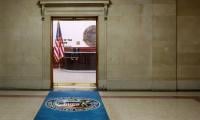Rawalpindi needs sewage management plan
The blast in Fazal Town Phase-I last Saturday morning that damaged many houses and injured some was not a bolt from the blue. It was the result of the concretised earthen bed and sides of the 'nullah' with the top paved over and the gas pipeline passing through it. The
By Ibne Ahmad
August 03, 2015
The blast in Fazal Town Phase-I last Saturday morning that damaged many houses and injured some was not a bolt from the blue. It was the result of the concretised earthen bed and sides of the 'nullah' with the top paved over and the gas pipeline passing through it. The concerned departments even armed with the knowledge were not able to do even precious little to prevent the terrible explosion.
First it prompted speculation the incident could have been an act of sabotage but no trace of explosives was found at the site of the explosion. "The explosion was caused by an accumulation of gas in the paved 'nullah' believed to be sewage gas that emanated from sewage in the 'nullah' coupled with the gas leaked from an aging gas pipeline," says an official of the civil defence.
"Rawalpindi city fathers lack initiative to ban concretising and paving 'nullahs'. It is this misstep that increases drainage problems and causes blasts, like the one that took place in our locality," says Ashfaq Hussain, a retired army man from the area.
"The stench of sewage and smell of gas often hung over part of the locality. Why didn't one person report anything about that odour? Residents should have realized that methane is a flammable gas if not explosive in enclosed area," says Shabbir Hussain, an SNGPL employee, now working in the area.
"Like millions of people living in cities, my home is next to a dirty nullah. Only the wall of my house separates it from the slothful stream of sewage. On most of the days, the nullah announced itself with a stench that infiltrated our houses. It was never cleaned and de-silted," says Naghma Naqvi.
"Many support covering up nullahs as a solution to a long-standing problem that mars their quality of life and lowers property values, however, instead of improving their environs, covering up nullahs makes life much worse," says Abbas Rizvi, an RWMC officer.
"Concretising the channel of a nullah means that it can no longer replenish groundwater. Covering it makes it harder to remove debris and sludge. During the monsoons, even constricted flow results in overflowing drains and flooding. Reduced oxygenation causes more gaseous emissions, increasing the stink," adds Abbas Rizvi.
Basit Ali, an old-timer city resident says: "Most nullahs were once channels of the river. They absorbed monsoon overflow, irrigated crops and provided drinking water. As the city grew denser, public sanitation projects installed underground sewers that debouched into these water bodies. Today, the streams have vanished and flowed from it."
"Even in municipal plans, these streams were not originally designated for carrying sewage. They were meant to be storm water drains, bearing runoff from the rains. But the single failure of the authorities to treat the sewage generated by this city has led to the streams being hijacked for this purpose," adds Basit.
"The neglect of sewage is a civic disgrace, one in which all the city residents are an accomplice. The pollution of water bodies is the direct result of our indifference to the fate of our filth. We flush it away and forget about it," says Wajahat Hasan, a district court employee.
"Many nullahs were once lined with trees and shrubs. When the vegetation is cleared to enable construction, precious green spaces get decimated. Covering nullahs is a misstep that takes the city further down the path of ecological crisis," adds Wajahat.
First it prompted speculation the incident could have been an act of sabotage but no trace of explosives was found at the site of the explosion. "The explosion was caused by an accumulation of gas in the paved 'nullah' believed to be sewage gas that emanated from sewage in the 'nullah' coupled with the gas leaked from an aging gas pipeline," says an official of the civil defence.
"Rawalpindi city fathers lack initiative to ban concretising and paving 'nullahs'. It is this misstep that increases drainage problems and causes blasts, like the one that took place in our locality," says Ashfaq Hussain, a retired army man from the area.
"The stench of sewage and smell of gas often hung over part of the locality. Why didn't one person report anything about that odour? Residents should have realized that methane is a flammable gas if not explosive in enclosed area," says Shabbir Hussain, an SNGPL employee, now working in the area.
"Like millions of people living in cities, my home is next to a dirty nullah. Only the wall of my house separates it from the slothful stream of sewage. On most of the days, the nullah announced itself with a stench that infiltrated our houses. It was never cleaned and de-silted," says Naghma Naqvi.
"Many support covering up nullahs as a solution to a long-standing problem that mars their quality of life and lowers property values, however, instead of improving their environs, covering up nullahs makes life much worse," says Abbas Rizvi, an RWMC officer.
"Concretising the channel of a nullah means that it can no longer replenish groundwater. Covering it makes it harder to remove debris and sludge. During the monsoons, even constricted flow results in overflowing drains and flooding. Reduced oxygenation causes more gaseous emissions, increasing the stink," adds Abbas Rizvi.
Basit Ali, an old-timer city resident says: "Most nullahs were once channels of the river. They absorbed monsoon overflow, irrigated crops and provided drinking water. As the city grew denser, public sanitation projects installed underground sewers that debouched into these water bodies. Today, the streams have vanished and flowed from it."
"Even in municipal plans, these streams were not originally designated for carrying sewage. They were meant to be storm water drains, bearing runoff from the rains. But the single failure of the authorities to treat the sewage generated by this city has led to the streams being hijacked for this purpose," adds Basit.
"The neglect of sewage is a civic disgrace, one in which all the city residents are an accomplice. The pollution of water bodies is the direct result of our indifference to the fate of our filth. We flush it away and forget about it," says Wajahat Hasan, a district court employee.
"Many nullahs were once lined with trees and shrubs. When the vegetation is cleared to enable construction, precious green spaces get decimated. Covering nullahs is a misstep that takes the city further down the path of ecological crisis," adds Wajahat.
-
 Emilia Clarke Reveals Real Price Of Playing Daenerys In 'Game Of Thrones'
Emilia Clarke Reveals Real Price Of Playing Daenerys In 'Game Of Thrones' -
 Ex-Chicago Mayor Hit With Lawsuit Over Unpaid Credit Card Bills
Ex-Chicago Mayor Hit With Lawsuit Over Unpaid Credit Card Bills -
 Andrew Risks His Relationships With Princess: ‘She’s Supporting The Abused And It’s Festering’
Andrew Risks His Relationships With Princess: ‘She’s Supporting The Abused And It’s Festering’ -
 Harry Styles Unveils New Album After Cryptic Posters Spark Fan Frenzy
Harry Styles Unveils New Album After Cryptic Posters Spark Fan Frenzy -
 Prince Harry Ready To Return To The UK To King Charles But It’ll Depend On How THIS Goes
Prince Harry Ready To Return To The UK To King Charles But It’ll Depend On How THIS Goes -
 Why Isn't King Charles Mourning Death Of His Father's First Cousin?
Why Isn't King Charles Mourning Death Of His Father's First Cousin? -
 Nicole Richie Breaks Silence On Her Daughter's Name Change
Nicole Richie Breaks Silence On Her Daughter's Name Change -
 Truth Behind Chris Noth, Sarah Jessica Parker's Ongoing Feud Revealed
Truth Behind Chris Noth, Sarah Jessica Parker's Ongoing Feud Revealed -
 Baseless Gender Identity Rumors Targeted At Bettijo Hirschi After Todd Bridges Split
Baseless Gender Identity Rumors Targeted At Bettijo Hirschi After Todd Bridges Split -
 'Harry Potter' TV Series Roped In Hans Zimmer For Score
'Harry Potter' TV Series Roped In Hans Zimmer For Score -
 Amy Robach, T.J. Holmes Make Daring Invite To Exes Marilee, Andrew
Amy Robach, T.J. Holmes Make Daring Invite To Exes Marilee, Andrew -
 Louis Tomlinson Gushes Over Harry Styles' Talent
Louis Tomlinson Gushes Over Harry Styles' Talent -
 Brian Austin Green Says THIS Relationship Left Him Feeling 'not Good Enough'
Brian Austin Green Says THIS Relationship Left Him Feeling 'not Good Enough' -
 Amy Robach, T.J. Holmes Shun Former Friends At 'GMA'?
Amy Robach, T.J. Holmes Shun Former Friends At 'GMA'? -
 Timothée Chalamet Shares Nervous Experience From 'Marty Supreme'
Timothée Chalamet Shares Nervous Experience From 'Marty Supreme' -
 'Andrew Leaving One Mansion To Go To Another Mansion'
'Andrew Leaving One Mansion To Go To Another Mansion'



